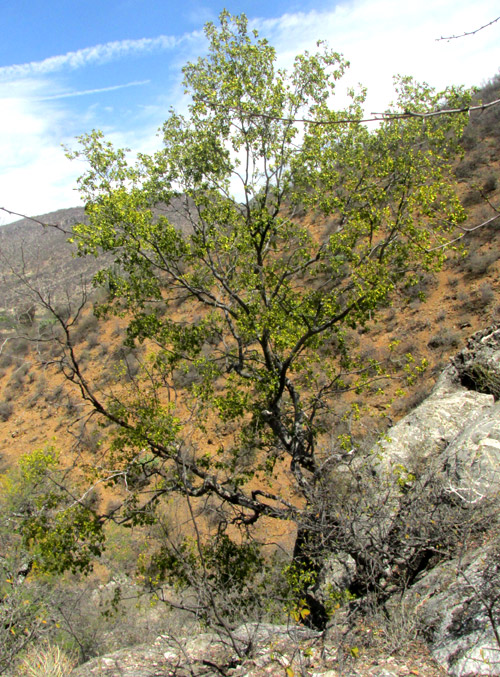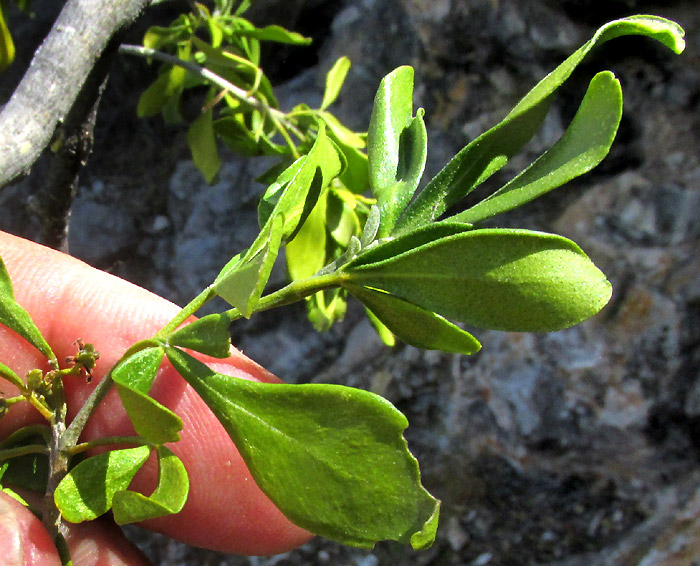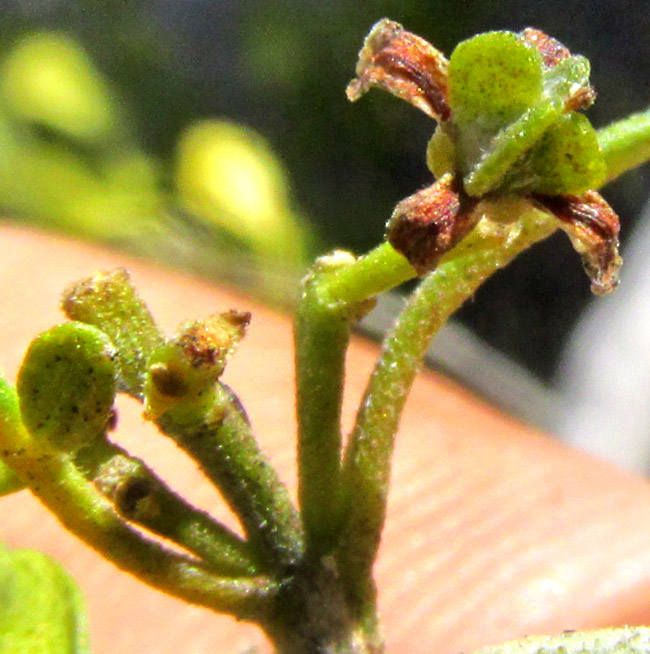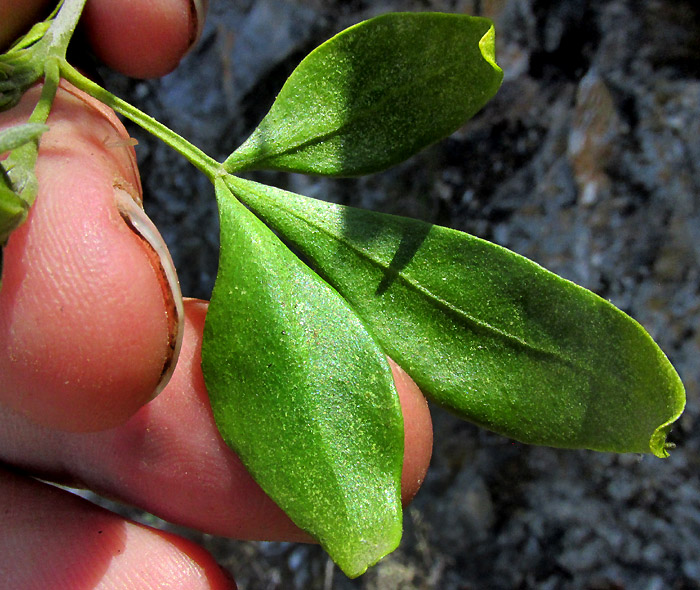Excerpts from Jim Conrad's
Naturalist Newsletter
Entry dated March 9, 2024, from notes taken about 2kms west of Higuerillas, Municipality of Cadereyta de Montes; N20.9086°, W99.7865°, elevation ~1760 meters (~5760 feet); on greywacke sandstone cap of hill; area constituting a narrow belt of the extreme southern extension of the Chihuahuan Desert, Meridional Subregion; central Querétaro state, MÉXICO
BARRETA

At the edge of a greywacke sandstone cliff, the above small tree was one of few species bearing green herbage during our normally occurring dry season amid an ongoing two-year drought. The North American Drought Monitor describes our drought as a D3 Extreme one.

Despite the lack of rain, the tree's branches bore freshly emerged stems bearing leaves and clusters of flowers.

The above thyrse-type inflorescence shows two flowers with brown, wilting petals, and four-winged ovaries enlarging to become fruits. Thyrses develop obscure main axes, with branches whose central stems bear single terminal flowers which develop first, then other flowers form at the tips of branches' of the side stems. Also in the picture, it's seen that leaves, at least at this branch tip, arise opposite one another in pairs. One leaf, still enlarging, displays a side leaflet. Round scars on the branches indicate aborted flowers which have fallen off.

The above flower at the picture's top, right, bears four brown, wilting petals. The four stamens already have fallen off. The enlarging, four-winged ovary in covered with grainy-looking, glistening, dark glands.

Fully formed leaves are somewhat leathery and trifoliate, and the middle leaflets are longer than the side ones. Leaflets bear very short, slender, white hairs, and also are glandular. Their midveins are easily seen but not the secondary ones. A conspicuous furrow or canal runs atop the petiole, almost forming wings along the sides. Here's what the scraggly, much branching and self-entangling trunk looks like arising amid the cliff's boulders:

The abundant glands on both developing fruits and leaves suggested the Citrus Family, the Rutaceae, which is home to orange, grapefruit and lemon trees. Those trees' fruits are very unlike what our flowers' ovaries appear to be developing toward. However, the family does embrace tree members of the family with papery-winged fruits and even trifoliate leaves, such as the Hoptree seen in Texas.
It's interesting to think about the differences between an orange and the four-winged fruit our tree is developing. In the old days, various subfamilies of the Citrus Family were designated largely on the basis of fruit structure. However, modern genetic studies indicate that different fruit types are scattered across the family with little regard to traditionally delineated subfamilies. If you dry out orange, reduce the partitions inside to four, limit the number of seeds in each partition to one, and grow wings on the surface on each partition, you get a fruit like that seen above.
Probably because of continuing uncertainty about how the Citrus Family is structured, there's no descriptive taxonomic treatment of that family's species occurring here in upland central Mexico. I identified our cliff-dwelling tree by comparing its features with those seen in pictures of the Citrus Family's 24 species listed as occurring in neighboring Hidalgo state, in the 2022 study by José Luis Villaseñor and others entitled "Riqueza y distribución de la flora vascular del estado de Hidalgo, México."
Our tree is HELIETTA PARVIFOLIA, in Spanish known as barreta, but in English publications typically spelled Baretta, probably because of an early error being copied and recopied. In the US, Baretta occurs only in Starr County in the Lower Rio Grande Valley, but in Mexico it's fairly commonly found, mostly on limestone ridges of the Eastern Sierra Mountains, south to about our tree here in Querétaro state.
Where the tree occurs in Mexico, it's regarded as excellent firewood, and with such hard, close-grained wood it can serve in carpentry. Our tree is too gnarled to look promising for woodworking, but pictures of other members of the species show individuals up to 12m tall (40ft), with fairly straight though slender trunks.
The 2009 study of Ruben Marroquin-Seguara and others entitled "The effect of the aqueous extract of Helietta parvifolia A. Gray (Rutaceae) stem bark on carrageenan-induced paw oedema and granuloma tissue formation in mice," reports that in the northern Mexican state of Tamaulipas, powdered stem bark of our tree is administered to wounded horses to avoid pain and inflammation. The study provided evidence that "... the aqueous extract of Helietta parvifolia acts as an anti-inflammatory agent in mice in both acute and chronic inflammation models."